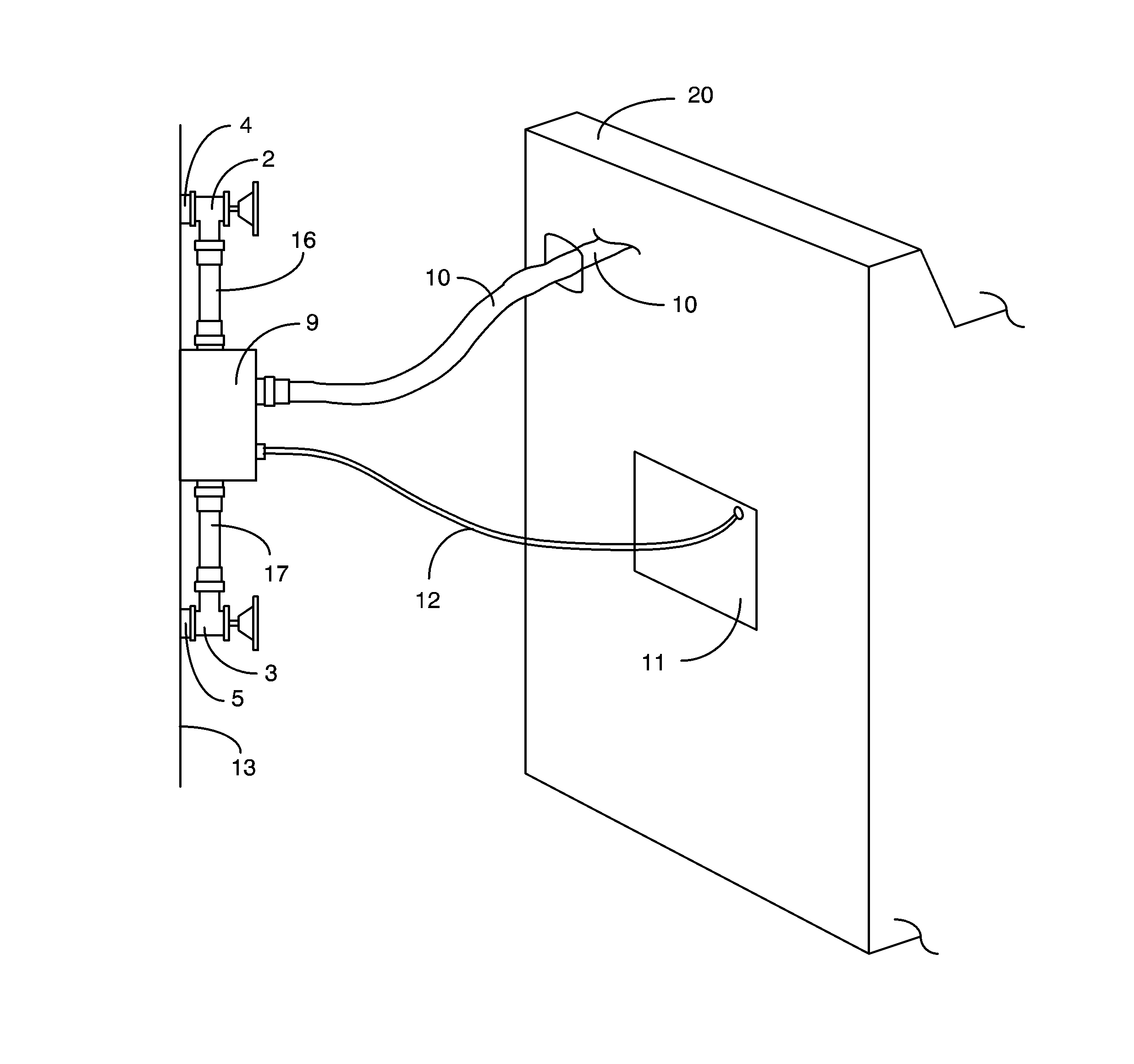A drawback to conventional designs is that the flexible hoses used to supply water to washing machines are directly attached to the building's water supply.
As a result, these flexible hoses are always under
water pressure from the building's water supply.
This
constant pressure is a significant problem since it contributes to early failure of the flexible hosing.
When the flexible hosing fails, the user's facility will rapidly flood if the user does not turn off the water supply.
In the event the user is available, and quickly shuts off the water supply, the damage may be limited.
However, in the event the user is not on the premises, the rapid
discharge of water may result in substantial damage to the user's facility, perhaps even resulting in structural damage to the building.
Further, when the user's facility is one floor of a multi-floor dwelling or commercial building, their neighbors may also be flooded.
An additional factor that increases the risk of hose failure is that the cold water and the hot water used by a washing machine is input to the washing machine via separate supply lines.
As a result, each washing machine has two flexible hoses under
constant pressure, each of which may fail, resulting in damage to the user's facility.
One
disadvantage is that it requires the use of additional components, heretofore not used by conventional washing machines.
This results in greater expense to the user when
purchasing the components used by this
system, as well as the possibility that additional repair expenses may be incurred in the event that one of these new components fails.
Another
disadvantage is that it still requires the use of three hoses: two flexible water supply hoses and a third fill hose.
An additional
disadvantage associated with this
system is that the wall mounted solenoid operated valves are opened whenever current is sensed.
Further, the current sensors only know when current is present, they do not know why the current is present.
If an additional device is plugged into the outlet in this manner, then depending on how the additional device is being used, it is possible that water pressure will remain on all of the time, thereby defeating the purpose of the system entirely.
In addition, since the solenoids in this system are activated whenever current is sensed, they will also increase costs by using additional unneeded
electricity when the washing machine is not being filled.
Yet another drawback to this system is that when current is no longer sensed, the system will shut off the solenoid-operated valves in the wall.
As a result, the flexible hoses remain under
high pressure which contributes to hose fatigue and early failure.
Another disadvantage of the prior art is that no
effective method of preventing water “
backflow” (back-siphonage) has been provided when using washing machines with flexible hoses.
As a result, washing machines do not comply with the plumbing code standards required of all other devices attached to the water supply system in a building.
Another problem associated with the prior art is the cost of maintaining a supply of hot water at all times so that hot water would be available when needed.
This is a substantial waste of energy sense the water and the typical water tank will be kept warm for extended periods of time when not needed.
Yet another problem associated with prior art is that extensive plumbing is required to deliver water to a washing machine.
This is substantial cost during construction, and doubles the risk of leaks over time.
The prior art has failed to provide a system that reduces the total number of required components and reduces the number of flexible supply hoses, while simultaneously reducing hose fatigue by eliminating water pressure on supply hoses whenever the washing machines are not being filled.
It has also failed to provide a system in which only a
single type is needed to deliver water to a close
washer that requires both hot and cold water to operate.
Further, the prior art has failed to provide a method of controlling
backflow that complies with plumbing code standards.
 Login to View More
Login to View More  Login to View More
Login to View More 


